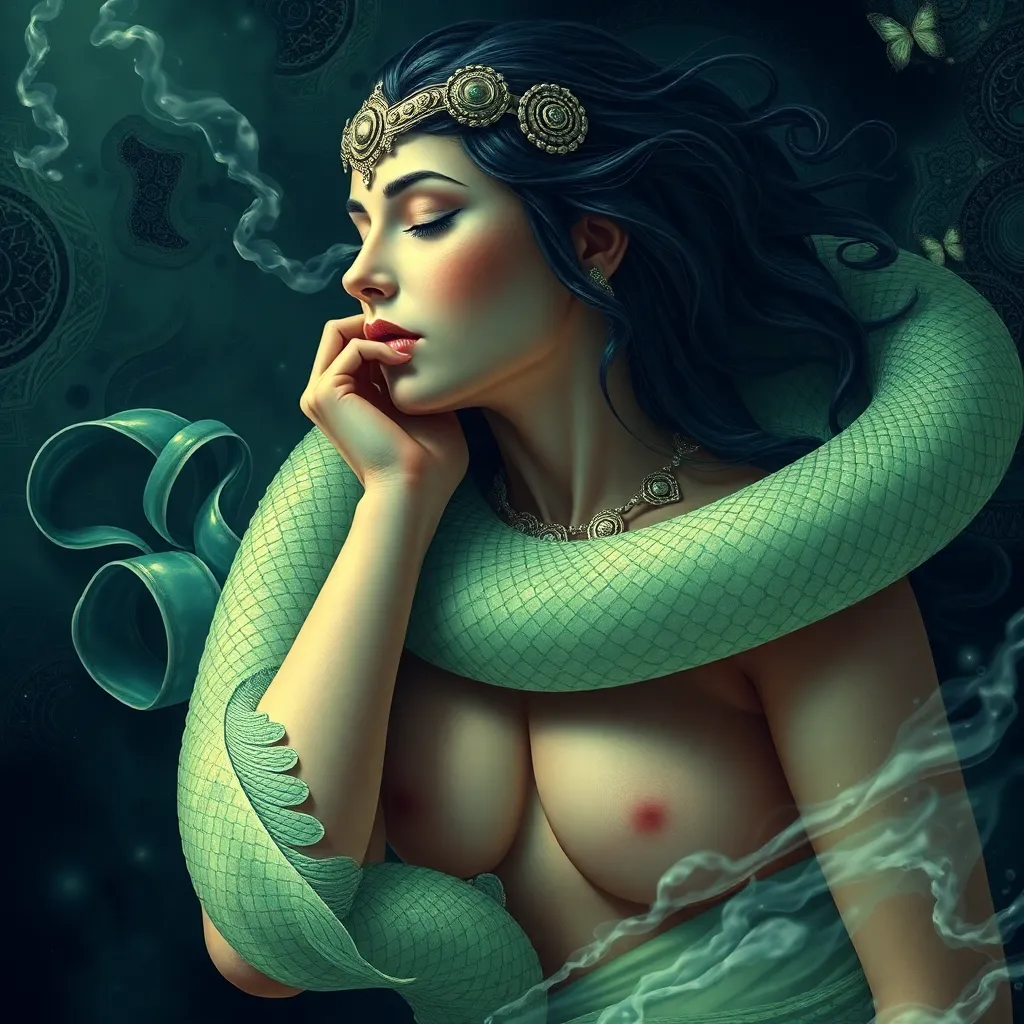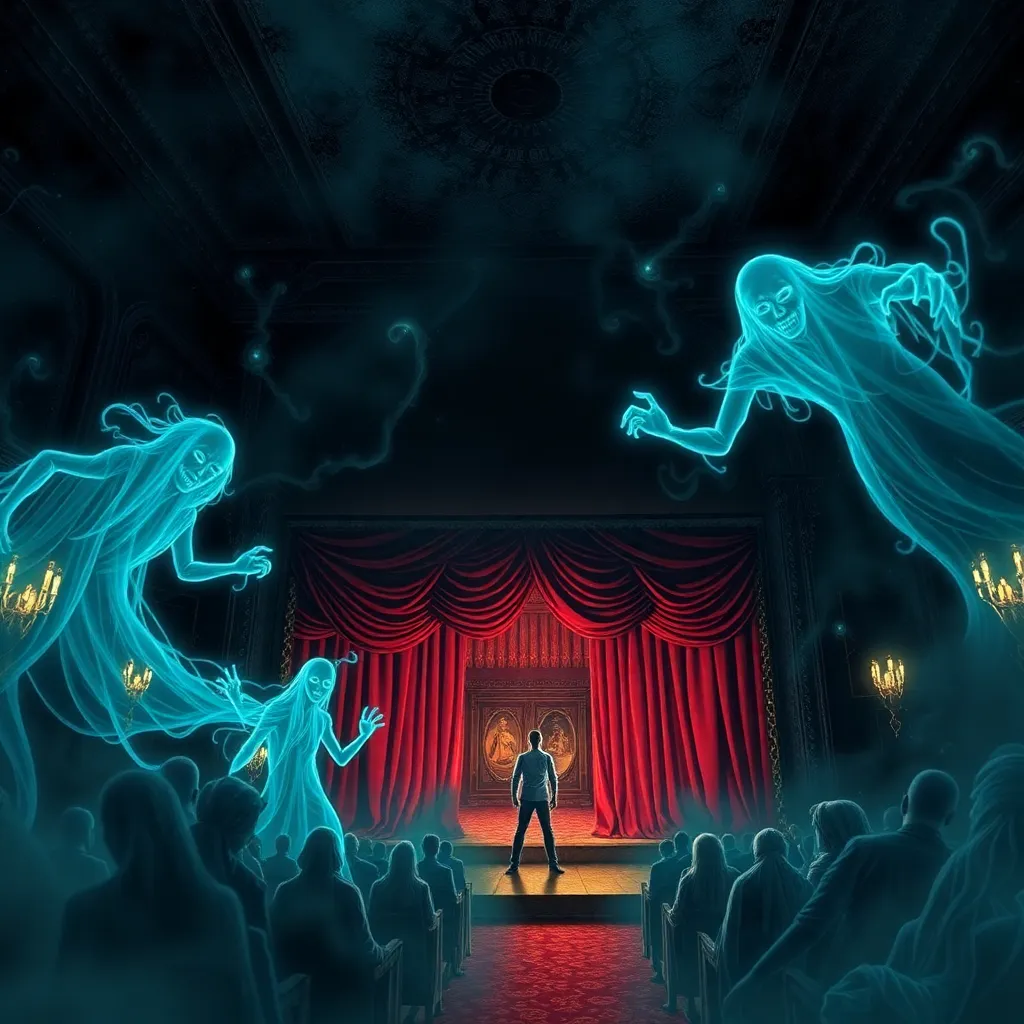Lamia in the Modern World: How the Serpent Woman Continues to Inspire and Intrigue
I. Introduction
Lamia is a figure steeped in the rich tapestry of Greek mythology, known for her tragic story that intertwines beauty, jealousy, and monstrosity. Originally depicted as a beautiful woman, Lamia’s transformation into a serpent-like creature symbolizes the darker sides of femininity and the consequences of loss and betrayal. In ancient folklore, her narrative served as a cautionary tale, reflecting societal fears and the complexities of womanhood. This article aims to explore how Lamia continues to inspire and intrigue contemporary culture, revealing her lasting influence across various domains.
II. The Myth of Lamia: A Brief History
The origins of Lamia can be traced back to Greek mythology, where she was a queen of Libya and a lover of Zeus. According to legend, her beauty captivated many, but her life took a tragic turn when Hera, Zeus’s wife, became envious. In a fit of rage, Hera killed Lamia’s children, leading Lamia to transform into a monstrous figure, cursed to roam the earth and prey upon the offspring of others.
- Origins in Greek mythology: Lamia as the beautiful queen.
- Transformation: From beloved woman to a feared monster.
- Themes: Jealousy, motherhood, and profound loss.
This transformation from a woman of beauty to a symbol of horror encapsulates the themes of jealousy and the pain of motherhood lost. Lamia’s story serves as a narrative of how external forces can warp one’s identity and humanity.
III. Lamia’s Symbolism in Modern Interpretations
Lamia’s legacy has evolved, with her character embodying complex themes in modern interpretations. Her duality represents both seduction and monstrosity, challenging the traditional notions of femininity.
- The duality of femininity: Lamia embodies both allure and terror, representing the multifaceted nature of women.
- Female empowerment: Her narrative can be viewed as a rebellion against patriarchal oppression, where her monstrous form symbolizes the anger and pain of women wronged.
- The serpent as a symbol: In many cultures, serpents represent transformation, wisdom, and healing, adding layers to Lamia’s character.
By embracing her monstrous persona, Lamia becomes a figure of empowerment, illustrating the struggle against the constraints of societal expectations.
IV. Lamia in Literature and Art
Lamia’s influence extends into literature and art, where she is often referenced or reimagined in various works. One notable example is John Keats’ poem “Lamia,” which captures her tragic essence and explores themes of love and illusion.
- Notable literary works: John Keats’ “Lamia” and its exploration of beauty and deception.
- Contemporary art: Visual representations of Lamia often depict her as a complex figure, bridging beauty and horror.
- Character development: Modern storytelling frequently draws on Lamia’s archetype to develop complex female characters who embody both strength and vulnerability.
Through literature and art, Lamia continues to inspire new generations of storytellers to explore the depths of her character and the themes she represents.
V. Lamia in Popular Culture
In the realm of popular culture, Lamia has made numerous appearances, particularly in genres that explore horror and fantasy. Her character often embodies the fears and desires associated with femininity.
- Film and television: Lamia appears in various horror films, often depicted as a seductive yet dangerous figure.
- Video games and graphic novels: Her mythos is frequently referenced, with characters inspired by her dual nature.
- Folklore revival: The renewed interest in folklore and mythology has brought Lamia back into the spotlight, allowing for reinterpretation and modern adaptation.
These portrayals reflect society’s ongoing fascination with the archetype of the serpent woman and highlight the enduring power of myth in contemporary narratives.
VI. Psychological and Sociological Perspectives
From a psychological standpoint, Lamia serves as a compelling archetype for analysis. Jungian interpretations often view her as a representation of the shadow self, embodying the repressed emotions and desires of women.
- Psychological analysis: Lamia as the shadow archetype, representing the darker aspects of femininity.
- Sociocultural implications: Her narrative engages with modern discussions about femininity, power, and societal expectations.
- Gender roles: Lamia’s story invites critical examination of how society perceives women who rebel against traditional roles.
As such, Lamia’s story resonates deeply within contemporary discussions about gender and identity, making her a relevant figure in today’s sociocultural landscape.
VII. The Enduring Fascination with Lamia
Despite the passage of time, Lamia’s relevance in modern narratives remains steadfast. Her story continues to captivate audiences, offering a lens through which to explore complex themes of power, loss, and transformation.
- Reasons for relevance: The universal themes within Lamia’s narrative resonate with contemporary issues, making her story timeless.
- Evolving nature of myth: Myths adapt to reflect current societal fears and desires, allowing figures like Lamia to maintain their significance.
- Exploration of societal fears: Lamia serves as a vehicle for addressing deep-seated anxieties regarding femininity and empowerment.
The enduring fascination with Lamia underscores the power of myth to evolve and remain pertinent across generations.
VIII. Conclusion
In conclusion, Lamia’s journey from ancient myth to modern icon illustrates the transformative power of storytelling. Her narrative, rich with themes of beauty, jealousy, and empowerment, invites ongoing exploration and reinterpretation. As we reflect on the importance of preserving folklore, Lamia stands as a testament to the complexities of femininity and the human experience. Further exploration of mythological figures like Lamia can deepen our understanding of cultural narratives and their implications in today’s world.



